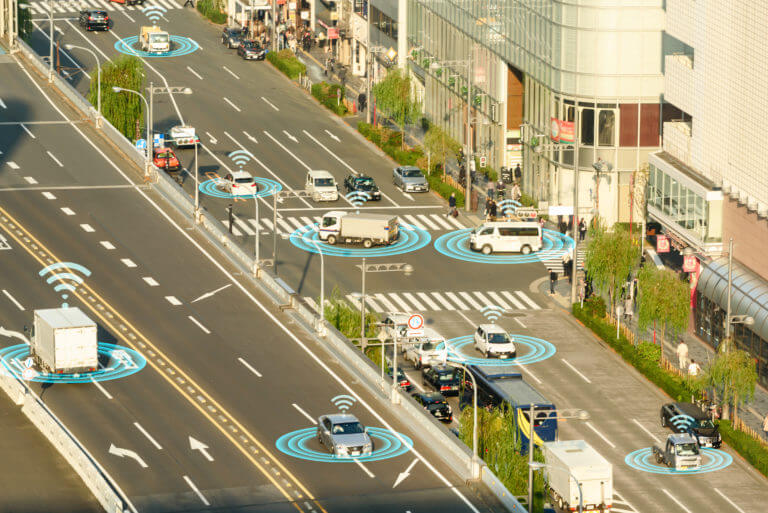
Why Electric Cars Can’t Come Fast Enough
Original Article, A. Arora, N. Niese, E. Dreyer, A. Waas, and A. Xie, bcg.com, April

Original Article, A. Arora, N. Niese, E. Dreyer, A. Waas, and A. Xie, bcg.com, April

In this time of crisis, the auto industry can’t afford to ignore crucial technology trends. Our analysis of the mobility-investment landscape helps company leaders make smart decisions now.

The purpose of this white paper is to provide a landscape of relevant industry alliances, consortia and other groups, while also highlighting the activities of key standards bodies, to provide
guidance to decision-makers from industry, as well as other stakeholders from the public sector about these activities.

Stakeholder engagement is a critical factor for a destination’s success. Technological and smart solutions will continue to be important for the future of travel, but the combination of technology and collaboration are the two prime factors that will lead to more responsible tourism management and an improvement of the touristic experience.

It is not surprising that self-driving trucks didn’t initially catch the public imagination. Most people
have never been in a truck before, let alone a self-driving one, and few give them more than a passing thought. However, trucks affect everyone’s lives: from the food we eat to the clothes we wear, nearly everything we buy reaches us via a truck. This means that automating the movement of goods may have as deep an impact on our lives as
automating how we move ourselves.

Electric vehicles are expanding beyond the personal market into trucks, buses, and other forms of mobility. Discover the technological and design challenges that come with transforming manufacturing of internal combustion engine cars to EV.

China leads in battery production and overall ranking. Germany and France move up to second and third place. Electric vehicle sales rise in Germany, France, Italy and South Korea.

The benefits of using autonomous and connected vehicles in agricultural fields and farms have proved to be equally – if not more – rewarding for owners, operators, and consumers. The use of smart mobility in the agriculture industry has been rewarding for the technology itself as well. Fields and farms are serving as testing and proving grounds for these technologies as they are advancing to make their mark in the transportation realm.

To collect these results, APMA and KPMG in Canada surveyed hundreds of Canadian manufacturing businesses in the fall of 2020 on their experiences, perspectives, and preparedness levels in relation to cybersecurity in the automotive sector.

Cities can get ahead of the many AV possibilities by developing plans, thinking creatively, and collaborating with other levels of government.

Canada is one of the countries assessed by this research as having the highest ratings for both government-funded Autonomous Vehicles (AV) pilots and industry partnerships, and much of its significant work is focused on collaboration. Organizations collaborate through the Ontario’s Autonomous Vehicle Innovation Network, which is supported by the province’s government.

These technologies will continue to evolve, connecting more vehicles to each other, to infrastructure, and to other users on the road. Avoiding undesirable outcomes and achieving the benefits of CASE vehicles in Canada will require meeting significant technical and societal challenges and will depend on how industry, consumers, and governments respond to problems and opportunities today.

We need to understand the potential of 5G and how it will redefine the limits of what we can do as a nation. If we don’t, others who do will win in the marketplace.

This report walks through the disruptive transit trends that exist, and the services and innovative solutions that transit riders can experience and benefit from now and in the near future.

It is important that the benefits of autonomous driving will not be counterbalanced by safety risks. This report aims to increase the understanding of the AI techniques used for autonomous driving and the cybersecurity risks connected to them, so that appropriate measures can be taken.

Ontario’s Autonomous Vehicle Innovation Network (AVIN) and Deloitte Canada review the strengths, challenges, and opportunities across Ontario’s automotive and mobility ecosystem.

A brief guide to in-demand and emerging knowledge, use of tools, skills, and abilities for the automotive and mobility sector in Ontario.

In this report, we delineate the
various trends driving change in
how goods move. We also focus on discussing the major
transformations and innovative
opportunities that we are seeing in all industries related to goods movement including logistics, freight, trucking, warehousing, and last-mile delivery.
By submitting this form, you are consenting to receive marketing emails from: Centre for Integrated Transportation and Mobility, B21 – 175 Longwood Rd S, Hamilton, Ontario, L8P0A1 Canada, https://www.citm.ca. You can revoke your consent to receive emails at any time by using the SafeUnsubscribe® link found at the bottom of every email.